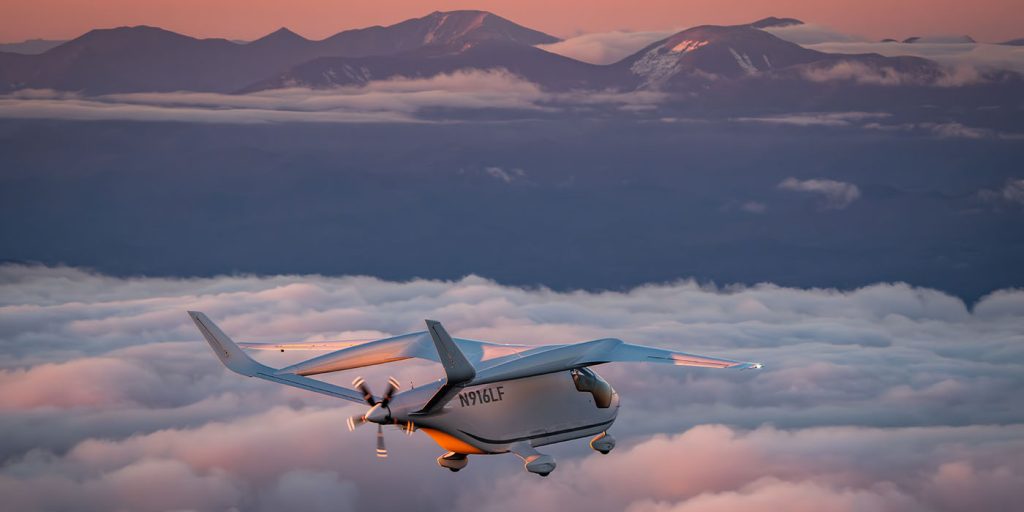
All-electric aircraft developer BETA Technologies has shared another important milestone in bringing its first two vessels to market. Most recently, BETA’s founder, CEO, and test pilot Kyle Clark took the production version of its ALIA eCTOL up for its first flight, as seen in the video below.
BETA Technologies is a fully integrated electric aircraft and systems developer based in Vermont. Three years ago, it debuted its first electric vertical takeoff and landing (eVTOL) aircraft, the ALIA–250. That BETA vessel has since been renamed the ALIA VTOL and completed a piloted test flight transitioning mid-air this past April.
In addition to the ALIA VTOL, BETA has also been developing an electric conventional takeoff and landing (eCTOL) plane called the ALIA CTOL. To date, it has flown tens of thousands of test miles en route to evaluation flights for FAA certification. That aircraft is targeting full approval for commercial operations by 2025.
As BETA moves closer to bringing the ALIA CTOL to the public, it has completed its first bonafide production build in South Burlington. Following a Special Airworthiness Certificate from the Federal Aviation Administration (FAA), BETA has successfully taken its production-ready ALIA CTOL up for a test flight, piloted by its founder and CEO.

Watch BETA’s founder complete a CTOL test flight
BETA Technologies shared details of its first successful production CTOL test flight today alongside the images above and the full video below.
Once the production-intent build of the ALIA CTOL was complete, the FAA inspected the aircraft for safety and compliance before granting BETA a Multipurpose Special Airworthiness Certificate for Experimental Research & Development, Market Survey, and Crew Training, signing-off approval for test flights.
On November 13, BETA CEO, founder, and test pilot Kyle Clark conducted the first test flight of the ALIA CTOL aircraft, which lasted nearly an hour. The test included a conventional runway takeoff before the aircraft climbed to 7,000 feet.
While in the air, Clark tested the aircraft’s handling qualities, stability, control test points, and initial airspeed expansion before completing several approaches ahead of a normal landing. Clark spoke following the successful flight:
This start of our production CX300 flight test campaign is a result of years of hard work and focus on studying customer requirements, hard engineering, manufacturing, production, quality and test. It represents a significant milestone for BETA, and is the beginning of an exciting new phase for the business. With this, we’re one step closer to putting this technology into the hands of our customers.
We learned a lot from this first production build. We weren’t just building an aircraft company, we were building and refining a system to build high quality aircraft efficiently. This first build allowed the team to collect data and insight on manufacturing labor, tooling design, processes, yields and sequences, all of which are being used to refine our production systems.
With its production test flight campaign now underway, BETA says it will continue testing the ALIA CTOL aircraft for the standard 50 hours required before qualifying for a Market Survey and Crew Training certificate. That next certificate will enable BETA to fly outside of Burlington and Plattsburgh and continue training additional pilots on the aircraft.
The company shared it will also continue production of additional aircraft, including ALIA CTOL and ALIA VTOL configurations, the latter of which was recently teased in October. You can view footage of BETA’s CTOL flight below.
